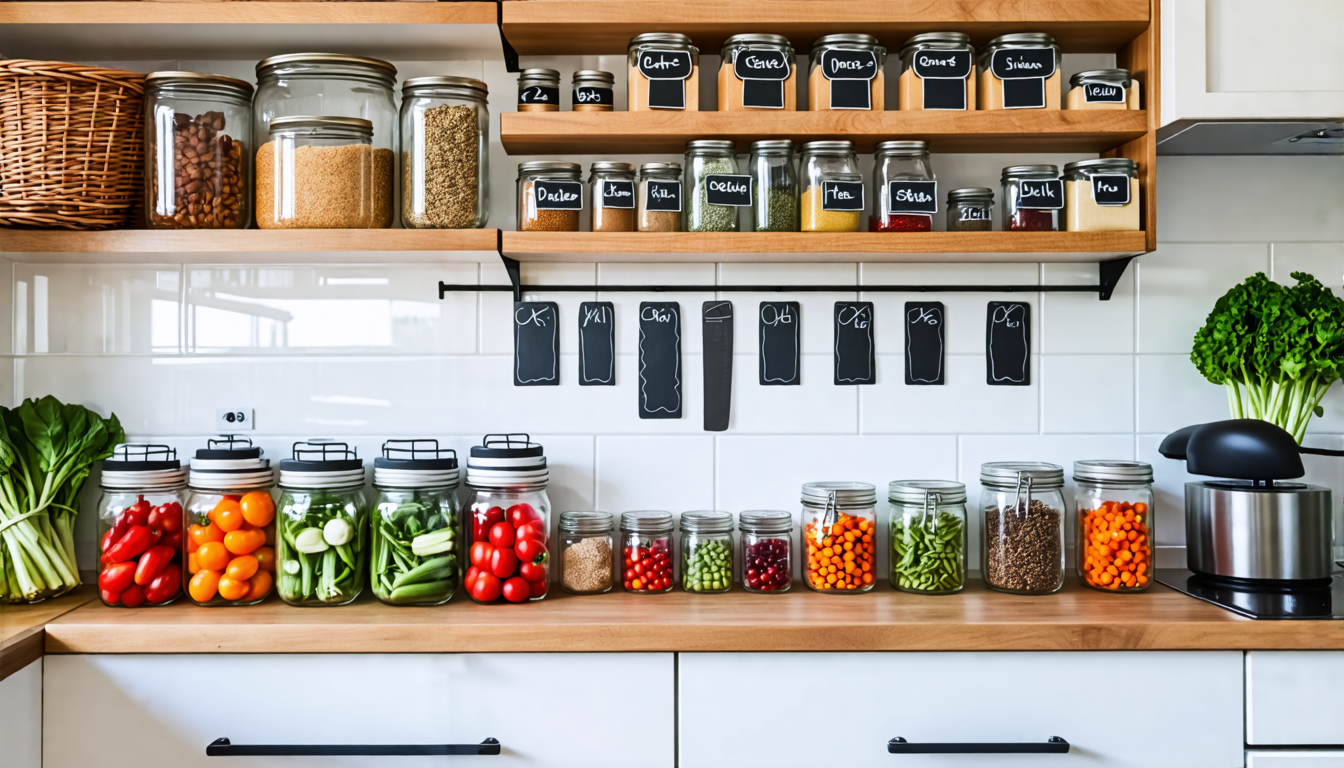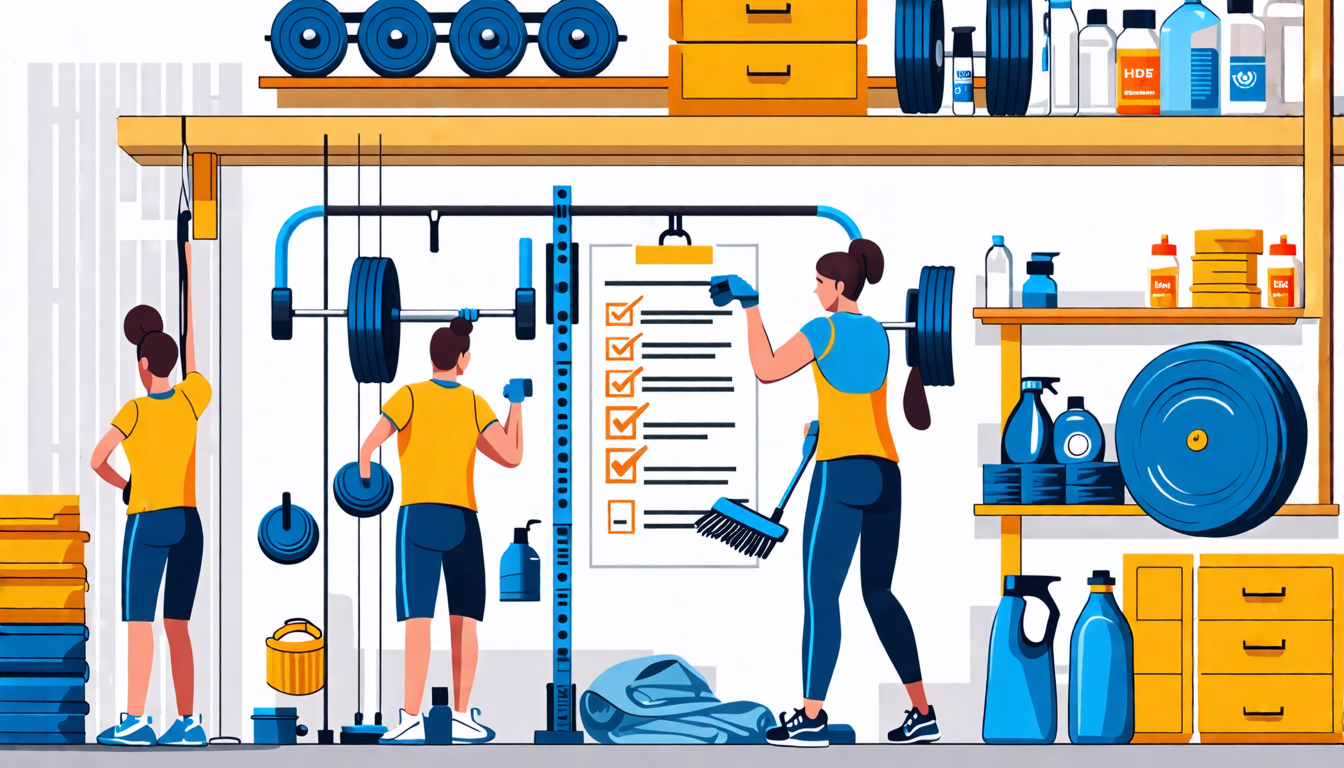Maintaining your home fitness bar is essential not only for its longevity but also for ensuring a safe and effective workout experience. In the comfort of your home gym, this versatile piece of equipment allows for a variety of exercises that can build strength and endurance. However, just like any other fitness equipment, your home fitness bar needs regular care and maintenance to perform at its best. This article will provide you with detailed, easy-to-follow steps on how to keep your fitness bar in top condition. From regular cleaning and checking for wear and tear to proper storage and handling techniques, we’ll guide you through all the necessary practices. Let’s dive in and explore the essential tips that will help you maintain your home fitness bar, ensuring it remains a reliable tool for your fitness journey.
1. Regular Cleaning and Maintenance Tips
Importance of Keeping the Fitness Bar Clean
Maintaining a clean home fitness bar is crucial for multiple reasons. Firstly, it ensures hygiene, especially since sweat and grime can accumulate on the bar over time, making it a breeding ground for bacteria and germs. Secondly, a well-maintained bar is less likely to wear out prematurely, saving you money in the long run. Finally, routine cleaning helps in detecting any potential issues like rust or material wear that could compromise your safety during workouts.
Step-by-Step Guide on How to Clean Your Fitness Bar
Cleaning your home fitness bar might seem straightforward, but doing it properly ensures effective maintenance. Here’s a step-by-step guide:
- Preparation: Before you begin, make sure you have all the necessary cleaning supplies ready. This includes a soft cloth, a nylon brush, mild soap, and water. Ensure that the bar is not connected to any weights or machines.
- Initial Wipe Down: Use a soft cloth dampened with water to wipe down the entire bar. This removes surface dirt and sweat.
- Scrubbing: For stubborn grime or chalk residue, use a nylon brush soaked in soapy water. Scrub gently in a circular motion to clean the knurled areas of the bar effectively without damaging the texture.
- Rinse and Dry: Once scrubbed, rinse the bar with clean water to remove any soap residue. Immediately dry the bar thoroughly with a clean, dry cloth to prevent water spots or rust formation.
- Final Inspection: After drying, inspect the bar for any signs of rust, cracks, or unusual wear that might need attention. This step is crucial for ensuring safety.
Recommended Cleaning Products and Tools
Choosing the right cleaning products and tools can make a significant difference in maintaining your home fitness bar effectively. Here are some recommendations:
- Microfiber Cloths: These are perfect for wiping down the bar as they are soft and absorbent, preventing scratches.
- Nylon Brushes: Ideal for cleaning the knurled areas without causing damage. Avoid metal brushes as they can scratch and wear down the bar.
- Mild Soap or Dishwashing Liquid: Use non-abrasive cleaners to avoid damaging the bar’s finish. Harsh chemicals can erode the bar’s material over time.
- Isopropyl Alcohol: For disinfecting the bar, especially if multiple users are using it. Alcohol wipes can be used for a quick clean.
- Anti-Rust Spray: If you live in a humid area, applying an anti-rust spray can help prevent rust buildup on the bar.
Tips for Checking for Wear and Tear to Ensure Safety
Regular inspection of your home fitness bar can prevent accidents and prolong its lifespan. Here are some tips for checking for wear and tear:
- Inspecting the Knurling: Examine the knurled sections of the bar. They should remain sharp and pronounced. If the knurling begins to flatten or wear thin, it might compromise your grip and could indicate that the bar is wearing out.
- Checking for Rust: Look for any signs of rust, especially around the sleeves and the shaft. Rust weakens the structure of the bar and can lead to breakage under load.
- Assessing the Straightness: Roll the bar on a flat surface to check if it is still straight. A bent bar is unsafe and indicates significant wear.
- Sleeve Rotation: If your bar has rotating sleeves, check to ensure they spin freely without grinding or sticking. Lack of smooth rotation can affect the performance during exercises like the clean and jerk or snatch.
- Inspecting the Sleeves and Collars: Ensure that the sleeves aren’t wobbling and that the collars (if any) aren’t damaged or loose. Loose sleeves can affect the balance of the bar.
By following these regular cleaning and maintenance tips, you can ensure that your home fitness bar remains in top condition, providing a safe and effective workout experience every time you use it.

Storage and Handling Best Practices
When it comes to getting the most out of your home fitness bar, proper storage and handling play a crucial role. Not only does correct storage keep your fitness bar in pristine condition, but it also enhances its longevity, ensuring that you can safely continue your workout routines without issues.
The Significance of Proper Storage for the Longevity of the Fitness Bar
Proper storage is paramount for maintaining the quality and durability of your home fitness bar. Storing your bar haphazardly can lead to unnecessary wear and tear, as well as potential damage. A warped or rusted bar can not only compromise your workout sessions but also pose a safety risk. Investing a little time and effort into proper storage can save you money in the long run by reducing the need for repairs or replacements.
Ideal Storage Conditions and Techniques
The ideal storage conditions for your home fitness bar involve keeping it in a controlled environment that protects it from extreme temperatures, moisture, and physical damage. Here are some tips for optimal storage:
- Vertical Storage: If possible, store your fitness bar vertically using a bar holder or rack. This method reduces the risk of bending and keeps the bar out of the way, freeing up space in your home gym area.
- Horizontal Storage: Should vertical storage not be an option, storing the fitness bar horizontally on a rack is the next best choice. Ensure that the rack supports the full length of the bar to prevent warping.
- Avoid Damp Areas: Moisture is a major enemy of metal fitness bars. Keep your bar away from areas prone to dampness, such as basements or garages, unless these areas are well-ventilated and climate-controlled.
- Away from Direct Sunlight: Prolonged exposure to direct sunlight can affect the integrity of the bar’s coating and potentially weaken it over time. Store your bar in a shaded, cool area.
- Protective Cover: Consider using a protective cover or case for your fitness bar when it is not in use. This extra layer can help protect against dust, dirt, and accidental impacts.
Advice on Handling the Fitness Bar to Prevent Damage
Handling your fitness bar with care is just as important as storing it correctly. Proper handling techniques not only prevent damage but also ensure that you maintain a safe workout environment. Here are some tips to follow:
- Use Collars: Always use collars or clips to secure the weights on the bar. This practice prevents weights from slipping off during exercises, which can cause damage to the bar and potential injury.
- Avoid Dropping: While some fitness bars are designed to withstand drops, it’s best to minimize this practice. Dropping the bar excessively can lead to bending or damage to the knurling (the textured part of the bar used for grip).
- Load and Unload Evenly: When adding or removing weights, do so evenly to keep the bar balanced. Uneven loading can stress one side of the bar, potentially causing deformation.
- Clean Hands: Ensure that your hands are clean and free of excessive chalk before handling the bar. Chalk buildup can attract moisture and contribute to rust over time.
- Regular Inspections: Periodically inspect your fitness bar for any signs of damage or wear. Early detection can prevent small issues from becoming significant problems that could affect your workout safety.
- Rotate Use: If you have multiple fitness bars in your home gym, rotate their use to ensure even wear and prolong the life of each bar.
How to Lubricate and Maintain Moving Parts, if Applicable
Many home fitness bars come with moving parts, such as rotating sleeves, which require regular lubrication to function smoothly. Proper maintenance of these components is essential for the overall performance and lifespan of the bar. Here’s how to do it:
- Choose the Right Lubricant: Select a lubricant specifically designed for fitness equipment. Silicone-based lubricants or light machine oils are commonly recommended as they provide a smooth glide without attracting too much dust.
- Disassemble if Possible: If the design allows, carefully disassemble the moving parts to access all areas that need lubrication. Follow the manufacturer’s instructions to avoid damaging any components.
- Clean Before Lubricating: Wipe down the moving parts with a clean cloth to remove any dirt, dust, or old lubricant residues. Ensuring a clean surface enhances the effectiveness of the new lubricant.
- Apply a Small Amount: A little goes a long way when it comes to lubrication. Apply a small amount evenly across the moving parts and remove any excess with a clean cloth.
- Reassemble and Test: Once lubricated, reassemble the parts and test the fitness bar to ensure everything operates smoothly. Make sure there are no loose components.
- Regular Maintenance Schedule: Establish a regular lubrication schedule based on your frequency of use. Generally, lubricating the moving parts every few months should suffice, but high-frequency users may need to do it more often.
Following these storage and handling best practices will not only extend the life of your home fitness bar but also enhance your overall workout experience. Taking the time to store, handle, and maintain your equipment properly ensures you have a reliable companion in your fitness journey for years to come.
In conclusion, maintaining your home fitness bar is essential for ensuring its longevity, safety, and optimal performance. Regular cleaning is paramount; it doesn’t only keep the bar hygienic but also contributes to its overall durability. By following a meticulous cleaning routine that includes using appropriate products and tools, you can prevent the buildup of sweat, chalk, and grime that might corrode the bar over time. It’s equally important to periodically inspect the bar for any signs of wear and tear, which can prevent potential accidents and keep your workouts safe.
Proper storage and handling of the fitness bar are just as crucial. Storing the bar in an environment that is dry, cool, and away from direct sunlight can mitigate the risks of rust and deformation. Using storage racks or stands can help maintain the bar’s shape and keep it out of harm’s way. Additionally, careful handling minimizes the chances of dropping or banging the bar, which could cause damage. For bars with moving parts, like those with rotating sleeves, lubrication is necessary to keep these components functioning smoothly.
Adopting these maintenance and storage practices ensures that your home fitness bar remains in peak condition, providing you with a reliable tool for your home workouts. Whether you’re engaged in weightlifting, powerlifting, or general fitness routines, taking the time to maintain your equipment means you can enjoy effective and safe workouts for years to come.

